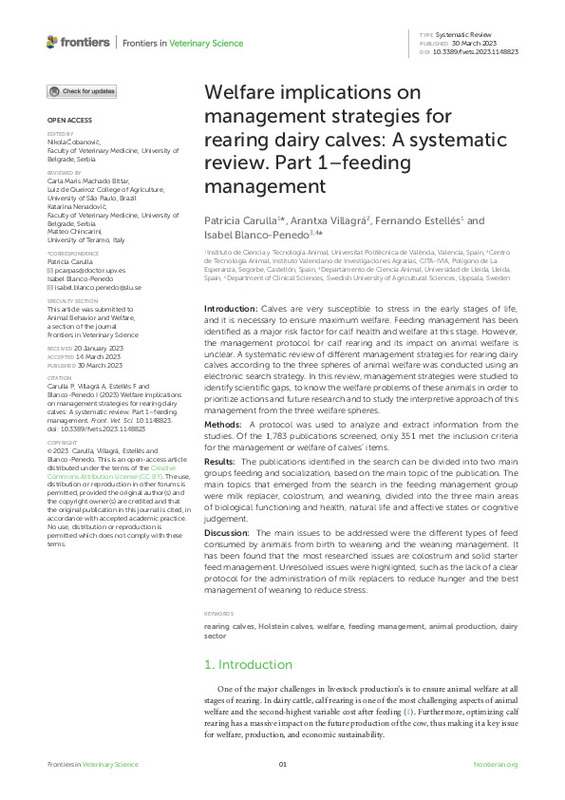JavaScript is disabled for your browser. Some features of this site may not work without it.
Buscar en RiuNet
Listar
Mi cuenta
Estadísticas
Ayuda RiuNet
Admin. UPV
Welfare implications on management strategies for rearing dairy calves: A systematic review. Part 1-feeding management
Mostrar el registro completo del ítem
Carulla-Pascual, P.; Villagrá, A.; Estellés, F.; Blanco-Penedo, I. (2023). Welfare implications on management strategies for rearing dairy calves: A systematic review. Part 1-feeding management. Frontiers in Veterinary Science. 10. https://doi.org/10.3389/fvets.2023.1148823
Por favor, use este identificador para citar o enlazar este ítem: http://hdl.handle.net/10251/202308
Ficheros en el ítem
Metadatos del ítem
| Título: | Welfare implications on management strategies for rearing dairy calves: A systematic review. Part 1-feeding management | |
| Autor: | Villagrá, Arantxa Blanco-Penedo, Isabel | |
| Entidad UPV: |
|
|
| Fecha difusión: |
|
|
| Resumen: |
[EN]
Introduction: Calves are very susceptible to stress in the early stages of life, and it is necessary to ensure maximum welfare. Feeding management has been identified as a major risk factor for calf health and welfare ...[+]
|
|
| Palabras clave: |
|
|
| Derechos de uso: | Reconocimiento (by) | |
| Fuente: |
|
|
| DOI: |
|
|
| Editorial: |
|
|
| Versión del editor: | https://doi.org/10.3389/fvets.2023.1148823 | |
| Código del Proyecto: |
|
|
| Agradecimientos: |
This research was supported by Centro para el Desarrollo Tecnologico Industrial and Cowvet S.L. by project CDTI-IDI-20200936. In addition, PC held a grant from the Ph.D. student's research program of the Universitat ...[+]
|
|
| Tipo: |
|









